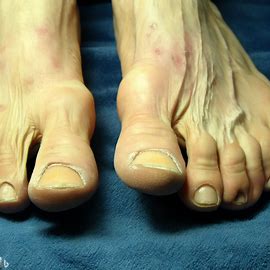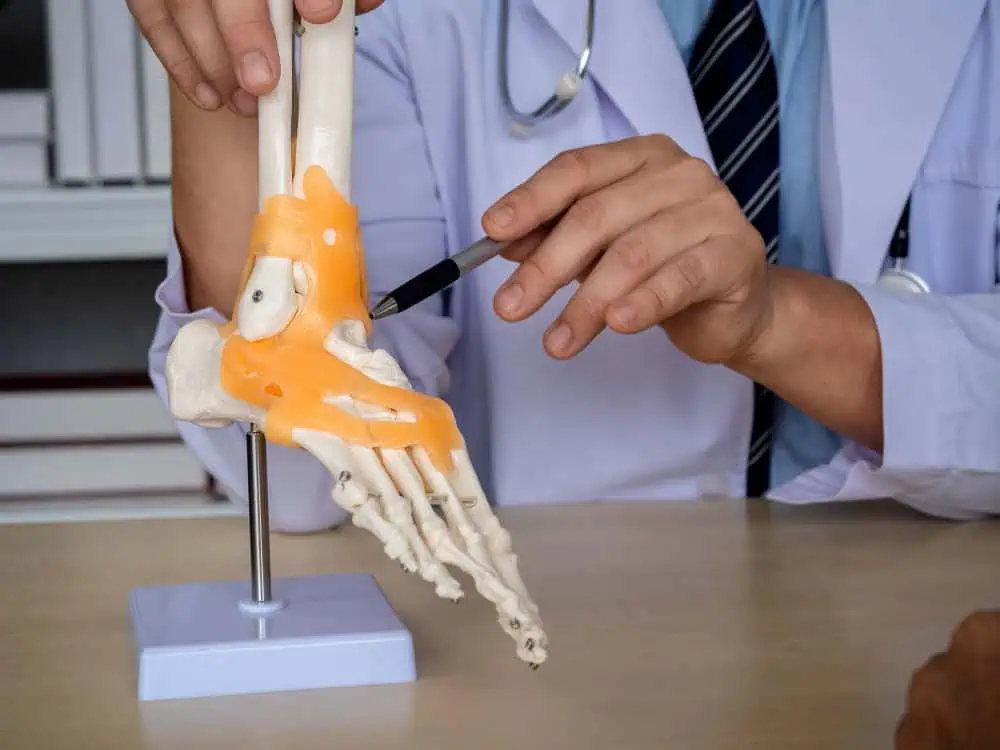

Ever Heard of Pigmented Villonodular Synovitis? A Podiatrist Explains This Obscure Ankle Woe
Ankle pain is a common complaint, but sometimes the culprit behind the discomfort can be a bit more unusual. Today, we’re venturing into the realm of lesser-known foot and ankle conditions with pigmented villonodular synovitis (PVNS).
What is Pigmented Villonodular Synovitis (PVNS)?
PVNS is a benign (noncancerous) tumor that develops in the synovium, the thin lining that surrounds your joints and produces lubricating fluid. This condition can affect any joint, but it has a particular fondness for the knee, followed by the hip and, you guessed it, the ankle.
What Happens in the Ankle with PVNS?
In a healthy ankle, the synovium produces just enough fluid to keep things moving smoothly. But with PVNS, the synovium goes into overdrive, churning out excessive fluid and developing abnormal tissue. This thickened, inflamed lining can cause a cascade of problems:
- Pain: The constant irritation and inflammation within the joint lead to significant pain, often described as a dull ache or throbbing sensation.
- Swelling: The extra fluid buildup creates a noticeable bulge around the ankle joint.
- Stiffness: Movement becomes restricted as the thickened synovium restricts the joint’s range of motion.
- Instability: In severe cases, PVNS can weaken the supporting structures of the ankle, leading to a feeling of looseness or instability.
Who Gets PVNS?
The exact cause of PVNS remains a mystery. It can strike anyone at any age, but it’s most commonly diagnosed in adults between 30 and 50 years old. Men seem to be slightly more susceptible than women.
Diagnosing PVNS in the Ankle
Ankle pain with swelling can be a symptom of many conditions. To diagnose PVNS, your podiatrist at WeTreatFeet Podiatry will likely take a multi-pronged approach:
- Detailed history and physical examination: Your podiatrist will inquire about your symptoms, duration of pain, and any activities that aggravate it. A thorough physical exam will assess the location and severity of swelling, tenderness, and range of motion.
- Imaging studies: X-rays can help rule out other bone abnormalities, while MRI scans provide detailed visualization of the soft tissues like the synovium, revealing characteristic features of PVNS.
- Synovial fluid analysis: In some cases, your podiatrist may recommend withdrawing a small sample of fluid from the ankle joint for laboratory analysis.
Treating PVNS in the Ankle at WeTreatFeet Podiatry
Fortunately, PVNS is a treatable condition. Here at WeTreatFeet Podiatry, we prioritize minimally invasive approaches whenever possible. Our treatment plan for PVNS in the ankle may include:
- Arthroscopic synovectomy: This minimally invasive surgical technique utilizes a tiny camera and specialized instruments inserted through small incisions to remove the inflamed synovial tissue. This procedure offers several advantages, including faster recovery times and less scarring.
- Open synovectomy: In cases with extensive synovial involvement, a traditional open surgical approach may be necessary for complete removal of the abnormal tissue.
- Physical therapy: Rehabilitation plays a crucial role in regaining strength, flexibility, and stability in the ankle joint after surgery.
Specialty Treatments for PVNS at WeTreatFeet Podiatry
WeTreatFeet Podiatry goes beyond standard treatments, offering advanced options to optimize outcomes for PVNS patients:
- Regenerative medicine: Techniques like platelet-rich plasma (PRP) therapy may be explored to promote healing and tissue regeneration after surgery.
- Advanced pain management: We can employ various modalities like nerve blocks or medication injections to provide targeted pain relief during recovery.
- Minimally invasive joint replacement: In severe cases where PVNS has caused significant damage to the ankle joint, minimally invasive ankle replacement surgery might be considered to restore function and alleviate pain.
Living with PVNS
While PVNS is not a life-threatening condition, it can significantly impact your daily activities. Early diagnosis and proper treatment by a podiatrist experienced in managing PVNS, like the team at WeTreatFeet Podiatry, is key to a successful outcome.
Here are some tips for managing PVNS in the ankle:
- Rest: Avoid activities that aggravate your ankle pain.
- Ice therapy: Applying ice packs to the affected area for 15-20 minutes at a time can help reduce inflammation and pain.
- Compression: Wearing a compression bandage or ankle brace can offer support and stability.
- Maintain a healthy weight: Excess weight puts additional stress





